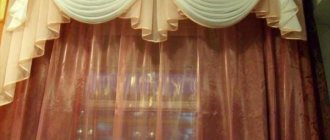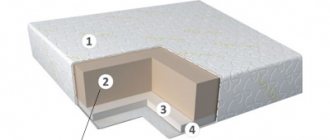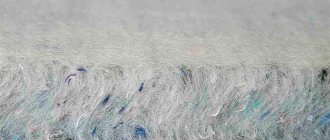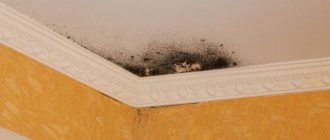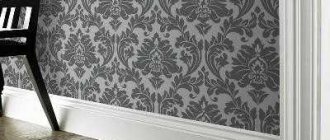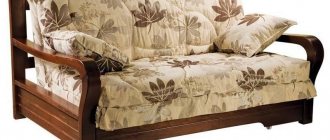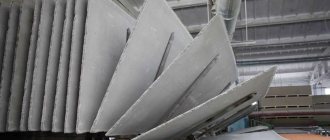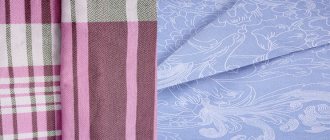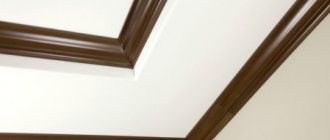Key features of the material
Polyurethane foam consists of two main components: diisocyanate and polyol. The latter is responsible for density, strength and other characteristics.
Diisocyanate is added to initiate a chemical reaction that causes the mass to foam. The resulting material has a porous structure, all its cells are filled with carbon dioxide.
Separately, diisocyanate and polyol are highly toxic substances. Opponents of the PPU point to this. But scientists claim that in the process of mixing these components, the poisons are destroyed, and the final composition is absolutely harmless to humans.
Important! Polyurethane foam has found wide application in construction due to its excellent thermal insulation properties. It is used as insulation for walls, roofs, building foundations, pipes, water tanks and other structures.
Safety
A material is said to be environmentally friendly if only high-quality components and professional equipment were used when pouring the thermal insulation coating. It is equally important that the spraying is done by a qualified craftsman - how he mixes the components affects the safety of the coating. Raw materials for polyurethane foam belong to hazard classes 2 and 3, and after hardening, a material characterized by inertness is formed.
If the proportions of the starting components are chosen incorrectly or the technology for preparing the liquid mixture is violated, the chemicals will not react completely. The result is a pungent, toxic odor that does not dissipate well and causes illness. An experienced craftsman does not make mistakes, making the coating environmentally friendly and non-flammable.
During the mixing of raw materials, toxic formaldehyde, benzene, phenol and toluene diisocyanate are formed. After applying the “coat,” they evaporate within a day and are no longer released, unlike foam plastic or mineral wool.
Opponents of the chemical compound focus on the destruction of the substance during the combustion process. They state that at a temperature of 180 ° C, ethylene, formaldehyde, nitrogen and carbon oxides, and isocyanates are released. In reality, such temperature conditions are not compatible with human life, so there is no need to talk about harm.
Moderately flammable, low-flammability material is characterized by low smoke-generating ability. Look at the photo with a charred but not burnt room. There was a fire on the top floor, but sprayed polyurethane foam contained the fire due to its low thermal conductivity and non-flammability.
Not only hard compounds have such properties, but also high-quality soft ones. Sofas and pillows based on elastic polyurethane foam do not burn, do not emit harmful substances, do not cause allergies, and doctors do not prohibit their use. Cheap brands of foam rubber do not differ in such properties.
Advantages and disadvantages
There are several types of polyurethane foam: hard, elastic, foam, and so on. They differ in characteristics and release form.
But they are united by a number of advantages over similar materials:
- Excellent adhesion to any type of surface. Polyurethane foam is allowed to be used on structures made of brick, concrete, metal, glass, wood and others. Surfaces do not need to be pre-prepared.
- Low thermal conductivity.
- Good soundproofing qualities.
- Ease. The material does not increase the weight of the structure or create additional load.
- Resistant to temperature changes. PPU is operated in the range from -150 to +150 degrees Celsius.
- Long service life up to 30 years.
- High installation speed. Polyurethane foam can be applied to surfaces of any configuration, indoors and outdoors.
- Resistance to fungal infection.
Polyurethane foam has a number of disadvantages. The main one is the fear of ultraviolet radiation. Under the influence of sunlight, the thermal insulation properties of the material are significantly reduced.
Note! The disadvantage of polyurethane foam is that after application it is not possible to obtain a smooth surface. You will have to install additional covering from any sheet material.
Which filling is better for a sofa: PPU or spring block
A spring block is considered a softer padding, and for those who like hard sofas, it is better to choose polyurethane foam. Both fillers have advantages and disadvantages, and you need to focus on your feelings. Before buying, you should definitely test the furniture for convenience and comfort: sit and lie on it.
If the choice fell on a spring block, then it is better to choose a block with springs independent from each other; it is more comfortable, elastic and wear-resistant. If you choose polyurethane foam, you should pay attention to the thickness of the material and its density; the thickness should be at least 4 cm, and the density should be from 30 kg/m3. There are also products where polyurethane foam and a spring block are adjacent to each other.
PPU is a modern filler, in no way inferior to spring filler. It is advisable to choose a sofa that is not in the budget category. It should be noted that when using any packing, manufacturers may use low-quality raw materials and outdated technologies. The cheaper the furniture, the worse the quality of the materials used. Sometimes such savings can quickly affect the loss of the original appearance of upholstered furniture, as well as your health.
Specifications
Polyurethane foam is widely used in construction due to its excellent characteristics.
Key parameters of the material are given in the table.
| Characteristics | Values |
| Thermal conductivity, W/m*K | 0,019-0,028 |
| NRC Noise Reduction Ratio | 0,5 |
| Chemical resistance | Not afraid of the effects of petroleum products, alcohols, plasticizers, acids. |
| Moisture absorption,% | 1-3 |
| Flammability | G2-G4 |
| Density, kg/m3 | 25-750 |
| Hardness, MPa | 0,15-1 |
| Durability | 30 years |
| Environmental Safety | Suitable for residential premises |
Characteristics may vary depending on the specific type of polyurethane foam and the characteristics of its production.
Polyurethane foam does not contain ozone-depleting components and is resistant to moisture.
Products made from such material must comply with GOST R 56590-2015.
Application
The universal material is used in almost all areas of industry:
- Automotive: car seat filler, vehicle interior soundproofing.
- Mechanical engineering: cold insulator in household and commercial refrigerators, large refrigeration chambers, transport refrigeration equipment, medical installations.
- Transport: heat insulators for main pipelines, insulators for low-temperature pipelines in the chemical industry.
- Shoe industry: production of instep supports and other shoe elements.
- Furniture: soft polyurethane foams are used as filler and cushioning material for upholstered furniture.
- Lightweight: PU foam filler is used for sewing soft toys, mattresses, pillows, and mannequins.
- Construction: sandwich panels, acoustic insulation, waterproofing, thermal insulation raw materials for residential and industrial premises, warehouses, garages, hangars. To seal cracks and spaces between loosely fitting parts, urethane wood glue is used.
PPU for furniture
The chemical compound is a technological analogue of springs. It is simpler and cheaper to produce, and in terms of performance characteristics it does not lag behind, and in many cases even surpasses, springs. Polyurethane foam for furniture is available in different forms:
- Sandwich or block. This is a large “brick”. During the production process, furniture factory workers cut it into layers of different shapes and thicknesses. Then experts combine hard and soft layers, folding them into seats and backrests.
- Cast. Produced at a furniture factory. The liquid mixture is filled into a shaped blank, a chemical reaction occurs in it, and the polyurethane foam hardens under pressure. The final product takes on the exact size and shape of the sofa cushion or seat. Pros - no scraps, cons - a “crust” forms on the surface of the block, which does not allow air to pass through well. The price of sofas with molded polyurethane foam is higher than that of models with block lining.
Soft polyurethane foam with a density of 30-40 kg/m3 is used for furniture. The higher the indicator, the tougher and more durable the product. Low density polyurethane foam (up to 25 kg/m3) is suitable for decorative pillows. There are several types of materials with a polyurethane foam base: lokfoam, vibrofoam, Fomex (USA), moltoprene (Germany), allofoam (Canada). Their characteristics are similar to domestic polyurethane foam.
- How to weave rubber band bracelets on a machine step by step
- Precursors of labor in multiparous women
- Shilajit - beneficial properties and contraindications, reviews and prices. Benefits of mumiyo
Compounds with a memory effect (memoform, memorix) deserve special attention. Thanks to special additives, the material becomes highly elastic. It knows how to maintain the shape of the person sitting and perfectly adapts to the curves of the body. When a person rises, the memorix quickly straightens. Polyurethane memory foam was originally developed for NASA, but then became popular in light industry.
The manufacturer promises a comfortable sleep, because Memorix gently envelops the body without squeezing the blood vessels. Highly elastic polyurethane foam also has disadvantages, and significant ones. After unpacking, customers feel a toxic odor that does not always disappear even after a week. There is no question of environmental friendliness and health safety, because after examination, a sample of Memorix was found to contain toxins that cause allergies, asthma, eye irritation, and headaches. Hydrocarbons emit a bitter-sweet odor and affect the nervous and immune systems.
In Western countries with enhanced environmental safety control, Memorix does not contain hazardous chemical components. Sanitary standards in the CIS countries are not so strict. Some people are ready to buy very expensive Memoryx pillows and mattresses and endure the unpleasant aroma, because after sleeping on them, back and neck pain goes away. There are also rave reviews about Memorix online - buyers of a quality product are very satisfied with their purchase.
Polyurethane foam thermal insulation
A liquid mixture is used to insulate structures of any type. It is applied by spraying. Using special equipment, polyurethane foam is sprayed onto the wall, foundation, roof or various containers, which instantly increases in volume and fills cavities and cracks. The composition hardens after 5-10 minutes. The monolithic porous “coat” firmly adheres to the surface, has no seams or joints, and therefore reliably protects against heat leakage or penetration (relevant in the summer when the air conditioning system is running).
The number of closed cells is more than 92%, and for the best samples it is 97-98%. Thermal conductivity reaches 0.019-0.035 W/m°C. This indicator is the lowest among other insulation materials - polystyrene foam, polystyrene foam, polyethylene foam. Thermal insulating polyurethane foam has good moisture resistance. To reduce hygroscopicity, additives are added to the composition. Castor oil reduces hydrophilicity by 4 times. Polyurethane foam is resistant to basic chemical compounds: it does not dissolve in gasoline or diesel fuel. The service life of the “fur coat” is 20-30 years.
For insulation, ready-made thermal insulating polyurethane foam parts are also used: blocks, panels, semi-cylinders (pipe shells), but in terms of demand they are inferior to liquid polyurethane foam. The latter is applied not only to open surfaces, but also serves as an intermediate layer in sandwich panels. The flammability class of the substance is G2 and G3. The compound is not an active source of combustion; it will immediately go out if the fire is removed from it.
- Chicks on hands
- What is innate immunity - mechanisms and types. Factors of innate immunity
- Benefits of green tea: how to drink the drink
Difference from foam rubber
Foam rubber is a soft sheet material. It is an elastic modification of polyurethane foam, air and moisture permeable. Gas occupies up to 90% of its volume. Foam rubber absorbs water well, which limits its use in construction. It is often used to insulate basements, pipelines, roofs, garages and so on. It is advisable to use it only for interior work.
The main difference between foam rubber and polyurethane foam is that the latter is a solid material and has a lower percentage of air bubbles. Thanks to this, they can insulate external structures.
Foam rubber is more often used in the production of sponges, paint rollers, for upholstery, and so on. Previously, it was widely used in the manufacture of mattresses. Such products had many disadvantages: they did not support the spine well and took the shape of the body.
Today it was replaced by PPU. Polyurethane foam mattresses can have varying degrees of hardness and are suitable for people with musculoskeletal diseases.
Alternative materials
So, if you realize that such a mattress is not suitable for you, you should take a closer look at natural materials. Unlike polyurethane foam, they do not seem as modern. After all, these mattresses are not able to take a different shape, become softer under the influence of temperature, etc. But, as we have already found out, this is their strength.
- Coconut springs. These mattresses use coir processed into springs. They are rigid and do not bend.
- Coconut coir. This material makes the hardest mattresses. It is better to purchase them for children of preschool and school age, whose posture has not yet formed. Coconut fiber is also found mixed with latex. Different ratios allow you to get the most successful option for a particular person.
- Abaca is processed trunks and leaves of banana palms. An alternative to coconut fiber, abaca has a slightly longer lifespan.
- Horsehair - used in combination with other, softer materials. Used for hard layer.
- Seaweed – Also adds some cruelty.
- Felt is made from cotton. Conclusion
Most often, polyurethane foam is found in mattresses, sofas and armchairs. This is a synthetic material. By adding various substances, manufacturers change the properties of furniture, making it softer and able to adapt to the shape of the human body. However, many doctors argue that this quality is potentially harmful to health. Soft mattresses cause spinal deformation. For an adult, this may not pose such a danger. But for children it is better to buy hard natural mattresses - for example, made from coconut fiber.
Varieties
Depending on the characteristics, polyurethane foam is divided into five main types: hard, elastic, reticulated, integral, foam. They have different areas of application and application technology.
PPU polyurethane foam can be classified according to its release form. It is produced in sheets, rolls, blocks, cylinders. There is also acoustic material. It has a certain relief that increases its noise-absorbing characteristics.
Hard
A special feature of rigid polyurethane foam is its closed-cell structure. Thanks to this, its thermal insulation properties increase. The material has a high density.
It is used for insulating structures and soundproofing rooms. It is also used to make packaging materials for transporting fragile items, home decoration, and much more.
Rigid polyurethane foam in the form of sheets of different sizes is used for flat surfaces. It is easy to process. It is easy to cut a piece of any shape from it. It is attached with glue or dowels.
PPU shells are used to insulate pipelines. It is a half-cylinder, cylinder or small segment. More often it has an additional foil coating to protect it from adverse environmental conditions. Fastened with glue, metal or plastic ties or binding wire.
Prices for sheet polyurethane foam depend on its thickness. 1m2 of the thinnest material will cost 550 - 600 rubles. Slabs 100 mm thick cost 1,700 – 2,000 rubles. Prices for uncoated shells vary from 150 to 7,000 rubles, depending on the diameter.
Reticulated
Modern scientists have succeeded in reticulating polyurethane foam. This process is comparable to a controlled explosion, which results in the destruction of the membranes of the material. The result is a structure with an open cell shape.
Reticulated polyurethane foam is used in water and air filtration systems, as well as to create sound insulation. It is also used to make packaging materials and household items: sponges, washcloths, etc. Installation of the material on the walls is done using glue.
The cost of 1 m2 of reticulated polyurethane foam ranges from 850 to 1200 rubles. The price depends on the thickness of the material and porosity grade.
Elastic
A distinctive feature of elastic polyurethane foam is its resistance to temperature changes and chemicals. The material does not lose its properties after decades of use. After mechanical impact, it quickly restores its original shape.
This type of polyurethane foam is widely used in furniture production and the automotive industry. It is used for furniture upholstery, armrests, pillows, etc. Builders use it to create heat and sound insulation coatings. It is often used as dampers when laying floors or pipes.
Elastic polyurethane foam can be easily mounted using universal adhesive on a surface of any configuration. The price of such coverage ranges from 500 to 800 rubles per 1 m2.
Integral
Integral is called polyurethane foam that has a sandwich structure. It is a gas-filled material enclosed in a dense shell. Combines elasticity and resistance to mechanical stress. It has vibration-isolating properties.
This type of polyurethane foam is widely used in the production of furniture, car body parts, and sports equipment. It is also used to produce façade elements and interior items.
Foamed
When producing such a material, chemical components are mixed in a vacuum space. Foam forms. It can be applied to surfaces of any configuration. After drying, a durable, dense coating is formed that has excellent thermal insulation properties.
Might be interesting
Thermal insulation
Penoizol: self-production
Thermal insulation
Distinctive features and variety of ceiling tiles…
Thermal insulation
How to insulate the ceiling in a wooden house?
Thermal insulation
What is a heating cable?
Foamed polyurethane foam is used as a filler for noise-absorbing partitions in the manufacture of anti-vibration shock-absorbing inserts for technological equipment. It has become most popular when creating thermal insulation for attics, foundations, roofs, walls, and floors. It is also allowed to be used to form a waterproofing coating.
Improved types of polyurethane foam
In the manufacture of polyurethane foam, various catalysts are also used, due to which foaming of the material occurs. Depending on the quantity and what substances are used, polyurethane foam with different properties can be obtained.
Highly elastic polyurethane foam
It is also called artificial latex. Its difference from conventional filler is in the structure and shape of the cells. In a classical material, all cells have the same size and wall thickness, and their arrangement is ordered. The highly elastic version consists of cells that differ in all these characteristics. And they are located in a chaotic order. Thanks to this feature, the load is distributed between small and large cells. Furniture made from this material is more durable and can change shape, which is quickly restored. Therefore, highly elastic material is used for filling:
- furniture for apartments;
- office furniture;
- children's products;
- orthopedic mattresses;
- massage couches;
- car seats.
We recommend: Which mattress is better to choose – spring or springless?
Polyurethane memory foam
This variety is found under different names - “Memorix”, “Memoriform”, etc. The peculiarity of this material is its ability to adapt to the body. At the same time, in contrast to the type described above, this viscoelastic material recovers somewhat more slowly.
When a person sits, for example, on a sofa made of Memorix, it immediately adapts to the shape of his body. This effect is achieved due to the cell structure of the material and its increased sensitivity to temperature changes. From human warmth, furniture becomes softer and changes shape.
This material is different:
- higher density;
- low air permeability;
- ability to soften vibrations.
Review of manufacturers
Today, polyurethane foam is produced by many Russian and foreign companies. Among the market leaders are:
BASF
This brand was founded in Germany. Elastokam LLC became the official representative of the company in Russia. The product line includes spray-on, closed-cell, open-cell PU foam, casting systems, and materials for the formation of durable road surfaces. The company's product range includes polyurethane foam of any density. The price of liquid PU foam components of this brand ranges from 250 to 300 rubles per 1 kg.
Wanhua
Production is carried out in China. The company specializes in the production of liquid PU foam components. By mixing them, it is possible to obtain a high-quality sprayed heat-insulating material. 1 kg of components will cost 210-230 rubles.
Huntsman-NMG
Russian division of the international concern Huntsman. Since 1992, production has been carried out in the Russian Federation. The main product is sprayed polyurethane foam of various brands. The price for 1 kg of such material fluctuates around 250 -280 rubles.
Ecotermix
Russian manufacturer of components for sprayed polyurethane foam, as well as PIR and PUR filling systems. Closed-cell material of grade 300 and open-cell grade 600 are always available. The first is used for external work, and the second for internal work. Brand 300 polyurethane foam price – 160-170 rubles per 1 kg, brand 600 – 140-155 rubles.
ICYNENE
This Canadian-made polyurethane foam appeared on the Russian market relatively recently. Available in the form of separate components for the preparation of spray coating. Price for 1 kg – 180 -190 rubles.
Polymerization
Russian production company. Specializes in the production of shells, slabs, and shaped elements made of rigid polyurethane foam. Offers products of various thicknesses. 1 m2 of such coverage will cost approximately 2,500 rubles.
It is better to purchase polyurethane foam from trusted manufacturers that have a good reputation.
Before purchasing, the seller is asked to provide quality certificates and other accompanying documents for the goods. This is the only way to be sure of its quality and safety.
Advantages of using polyurethane foam
There are many advantages of using polyurethane foam coating. Firstly, a layer of the required thickness can be sprayed onto a surface of any shape. Strictly dosed portions of polyurethane foam can be poured into cavities of various configurations. Coating operations are carried out without any physical stress on the performer and are completed in a very short period of time.
You can take a thermal imaging device and check the insulating layer for the presence of cold bridges. In principle, they cannot exist, since the coating is obtained without the slightest joints. It is complete and without the slightest flaws. Very valuable is:
- the ability of polyurethane foam to be operated in a wide temperature range, a latitude of 530 degrees (from minus 250 to plus 180);
- biological neutrality;
- resistance to microorganisms, mold and putrefactive fungi;
- high-quality resistance to fire due to the presence of fire retardants;
- increased adhesion;
- no odor;
- environmental cleanliness, etc.
Builders appreciated the possibilities of laying polyurethane foam under plaster; it can be combined with cement screed and roofing felt. Not only can the roof be insulated, but when applied with polyurethane foam, it is covered with a waterproof and vapor-proof carpet. No other insulation can demonstrate such universal properties. In addition, when attaching heat-insulating materials other than polyurethane foam, you cannot do without special fasteners. Powerful adhesive properties make it possible, by building up the heat-insulating “coat” layer by layer, to obtain a monolith securely fixed to the insulated surface. PPU does not experience problems from rain and snow getting on its surface.
Absolutely surprising is the behavior of polyurethane foam when exposed to fire.
As soon as the flame is removed from the surface of the polyurethane foam, the combustion stops, there is no smoke or smoldering. Self-ignition is practically eliminated. Of particular interest in ensuring fire safety is the use of low-flammability foam grades, including those from the “G1” group. About the service life of polyurethane foam The service life of polyurethane foam is determined by its ability not to age, while maintaining operational properties that meet the requirements of specifications.
Tests of polyurethane foam were carried out in harsh conditions of extreme climate, including at the Antarctic Vostok station, with high humidity at the equator and in hot Tashkent. The research results revealed completely insignificant changes in physical and mechanical properties. It was very far from the limit of the acceptable level of indicators. An analysis of material research data over the past half century shows a very small change in thermal conductivity of 0.3 percent. In nature, there is no other heat-insulating material created by man that ages as slowly as polyurethane foam. At the same time, the insulation does not shrink at all, and the shape of the insulating filling does not change at all. For builders, maintaining thermal insulation properties for such a long time is very important. And other physical and mechanical properties over the course of decades show minor changes from the initial values recorded at the time of installation.
Even if the material is subject to cyclic deformation and is operated under conditions of variable temperatures, there are no changes in the macrostructure, any cracks, or crumbling. Compared to polystyrene foam, polyurethane foam has a service life twice as long. Expanded polystyrene maintains a minus temperature of 40 degrees, polyurethane foam - up to minus 250. Competing polystyrene foam over time begins to “foul” quite strongly with phenolic emissions, polyurethane foam maintains ideal environmental cleanliness in the room in use throughout its entire service life.
How to insulate yourself?
When starting to build or renovate their home, many people think about insulating it themselves without involving specialists. It's actually possible to do this. The main thing is to know the technology of working with polyurethane foam and strictly adhere to it.
Insulation of balconies and loggias
To insulate a balcony or loggia with polyurethane foam, two main methods are used: spraying and pouring. The first method is classic. It is used to treat any surfaces. Chemical components are mixed in a special apparatus. The machine begins to foam the composition, after which it can be sprayed onto clean, dry surfaces of walls, floors, and ceilings.
Liquid polyurethane foam can also be applied by pouring. To do this you will have to build a sheathing. The material is poured between the surface of the balcony wall and the sheathing. After hardening, it forms a strong, durable coating with excellent thermal insulation properties.
Basement
It is better to insulate the basement from the outside during the construction stage of the house. If this has not been done, you will have to work indoors. To simplify and speed up the process, sheet polyurethane foam is used. The work is divided into several stages:
- All surfaces are cleaned of dirt, falling pieces of plaster, and mold.
- A layer of waterproofing is applied. This could be mastic, liquid rubber, bitumen, and so on.
- PPU panels are laid. This can be done using glue. But for reliable and durable installation, it is recommended to use “fungi” dowels.
- After this, you can cover the insulation with finishing materials.
If polyurethane foam spraying is chosen as insulation, then waterproofing is not required. The liquid material penetrates into all cracks, reliably protecting it from aggressive influences.
Walls
Wall insulation is carried out both outside and inside the premises. The first method is preferable. This will allow you to move the area of condensation formation outside the room, preventing the destruction of the structure.
For walls it is recommended to use liquid polyurethane foam. It allows you to create a dense protective coating without joints. The polyurethane foam spraying process is divided into several stages:
- The surface is cleaned of dust and cement deposits. If there are large cracks. They are filled with cement mortar.
- The sheathing is being made. It is better to use wooden blocks for it. The distance between them should be at least 10 cm.
- PPU is being prepared. This can only be done after wearing a protective suit. The two main components are mixed in a special apparatus. It will not be possible to carry out work without it.
- Polyurethane foam should be sprayed onto the walls from bottom to top. The sprayer is kept at a distance of 5-6 cm from the surface.
- After completing the work, remove the spray nozzle and close the taps on the tanks with components.
It is very difficult to carry out such work correctly on your own. In addition, expensive equipment will be required. For a small private house, its purchase turns out to be impractical. Therefore, it is better to seek help from professionals.
Floor
Polyurethane foam is rarely used for floor insulation. This is due to its low vapor permeability. Often after such work a musty smell appears in the room. This material can only be used if there is a warm basement or basement under the floor.
Reviews from professionals recommend using sprayed polyurethane foam most often. The process of installing it is no different from working with walls. The material is also sprayed into the space between the sheathing. After the foam has completely dried, you can proceed to laying the flooring.
Attics and attics
Insulating the roof and walls of the attic allows you to reduce heating costs in winter and avoid a significant increase in temperature in summer. It is extremely difficult for a novice master to carry out such work on his own. Liquid polyurethane foam will need to be applied to vertical walls, as well as to roof surfaces with a negative slope.
Application of the material is allowed only in the warm season. All windows and doors are covered with plastic film. The first layer of sprayed polyurethane foam should have a thickness of about 15 mm. If necessary, after it has completely dried, additional material is applied.
Types of polyurethane foam and release forms
Polyurethane foam is divided into soft (density 5-40 kg/m3) and hard (30-86 kg/m3). The first group is foam rubber. The chemical industry produces foam rubber of different densities:
- standard (ST), maximum load 60-100 kg/cm2;
- hard (HL), 80-120 kg/cm2;
- soft (HS), 60-120 kg/cm2;
- increased hardness (EL), 60-100 kg/cm2;
- highly elastic (HR), 100-120 kg/cm2;
- highly elastic, fireproof, special purpose (CMHR), 100-120 kg/cm2.
Foam rubber of all brands, with the exception of CMHR, refers to highly flammable substances according to GOST 30244. GOST 30402 defines a chemical compound as flammable, and GOST 12.1.044 as smoke-generating, toxic when burned. Soft polyurethane foam is not used in construction. In this area, rigid polyurethane foam is used - a substance with fire retardant additives. From layers with a density of 30-70 kg/cm3 or sprayed raw materials, heat and sound insulation coatings are produced, and super-dense types (70-86 kg/cm3) are used for waterproofing in foundations and on other surfaces.
The chemical industry produces material in different forms:
- sheet - hard or soft, rectangular in shape, 5-1000 mm thick;
- rolled - soft, wound into reels of different widths, material thickness 2-30 mm, may have a backing made of fabric or synthetics;
- block - rectangular blocks of foam rubber with a hard, non-porous crust, which is completely or partially removed after the foam mixture has cooled;
- acoustic – individual panels with a figured relief, characterized by a high sound absorption coefficient;
- contour - parts that have a figured shape (seats, backrests, armrests) are made on the basis of a drawing;
- crumb – crushed high-density polyurethane foam from slabs or shells, fraction size – 10-30 mm;
- liquid – spray coating.
Tips and tricks from professionals
Despite the fact that polyurethane foam appeared on the Russian market relatively recently, professionals have managed to thoroughly study its properties and features of use.
They give some advice to novice masters:
- If a section of insulation is damaged, it must be cut out with a sharp knife and foamed again.
- To ensure that polyurethane foam lasts at least 30 years, it is protected from ultraviolet radiation. To do this, you can use polymer mastic or polyurea.
- For self-spraying PU foam on a small surface area, you can use disposable installations. Today they can be found in large construction stores. They will be much cheaper than professional equipment.
Polyurethane foam is a modern safe material with excellent thermal insulation properties. It is universal, suitable for processing any surface. Spraying polyurethane foam is a complex process, so it is better to entrust it to specialists.
Advantages
PPU polyurethane foam belongs to the category of gas-filled polymers. Its peculiarity lies in its cellular structure containing air or other gas, the total volume of which averages 90%.
Therefore, it has excellent insulation qualities, the most significant of which is its versatility.
Polyurethane foam insulation interacts well, in other words, “sticks” to any type of base, from smooth glass and metal to hard concrete, brick and wood.
The polymer is durable in tension and compression. Spraying polyurethane foam makes it possible to insulate the most inaccessible places, which eliminates the possibility of voids forming.
In addition, liquid polyurethane foam allows you to obtain a seamless layer of insulation without joints or gaps where cold wind or moisture can penetrate. In addition, the material adheres to both vertical and horizontal planes, which makes the scope of application of spraying limitless.
In turn, the thermal insulation layer withstands fluctuations in humidity and temperature, without condensing and without changing the structure of the cells.
The minimum weight of the fluffy mass does not weigh down the surface. In addition, insulating walls with polyurethane foam makes walls and partitions not only warmer, but also stronger and more solid.
High-quality polyurethane insulation has a low thermal conductivity value, much lower than foam or gas glass (0.84 W/m∙K) or the now very popular mineral wool (0.045-0.056 W/m∙K).
The service life declared by the manufacturers, estimated at 30 years, is the minimum value. If the spraying was not damaged as a result of mechanical influences, then the operational period may well exceed 40-50 years.
Affordable price is another advantage of liquid polyurethane foam. And given the possibility of preparing the mass yourself, you can literally insulate a building for pennies.
What is polyurethane foam filler in a sofa?
Comfortable and multifunctional sofas are favorite interior items. You can not only sit on them, relax and unwind after a hard day, but also use them for sleeping. This upholstered furniture will decorate the living room, bedroom, children's room and even the kitchen, if the space allows.
The practicality and durability of sofas depends on their internal filling. Modern PU foam filling for sofas allows them to be made without wire blocks. For relaxation, the comfort of the sofa comes first, and with such “stuffing” you don’t have to adapt for a long time to find a comfortable position.
Choosing filling for the sofa
After renovating an updated apartment, you always want to buy new comfortable furniture. When making a purchase, you should take into account not only the aesthetics of the appearance, but also the “filling” of the furniture. Comfort and service life will depend on this. Only high-quality materials can make furniture reliable, durable and stylish. The higher the density of a unique filler, the better and more durable it is. The greater its rigidity, the less elasticity.
For different types of use, a certain type of polyurethane foam is chosen: soft, hard and especially hard. Upholstered furniture intended for sleeping should be selected with hard and dense filling that performs an orthopedic function. When buying furniture, you should ask the seller about the composition of the filler and test the comfort on yourself.

